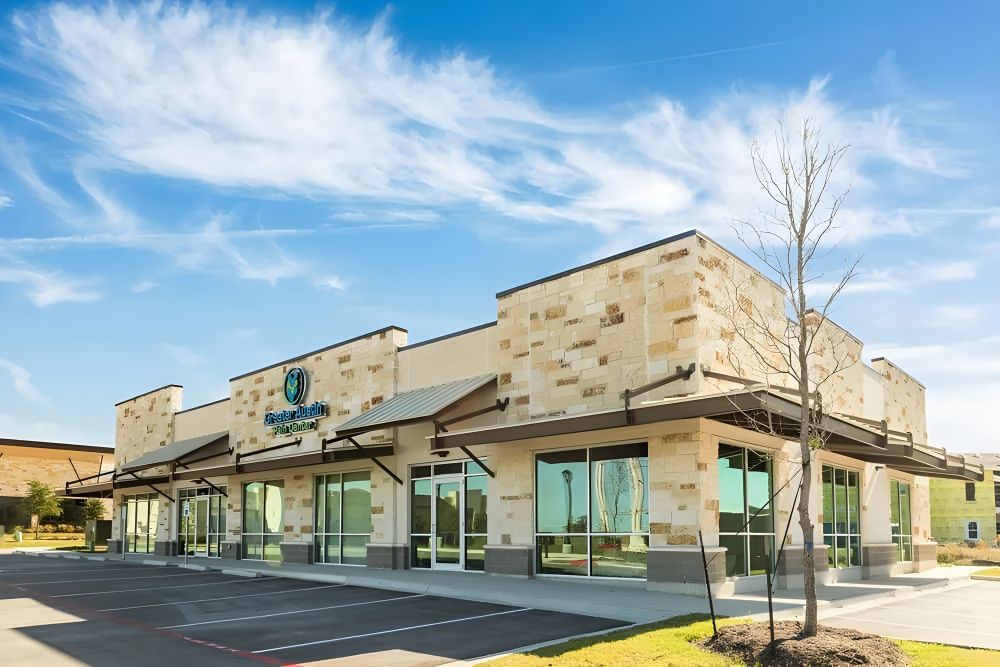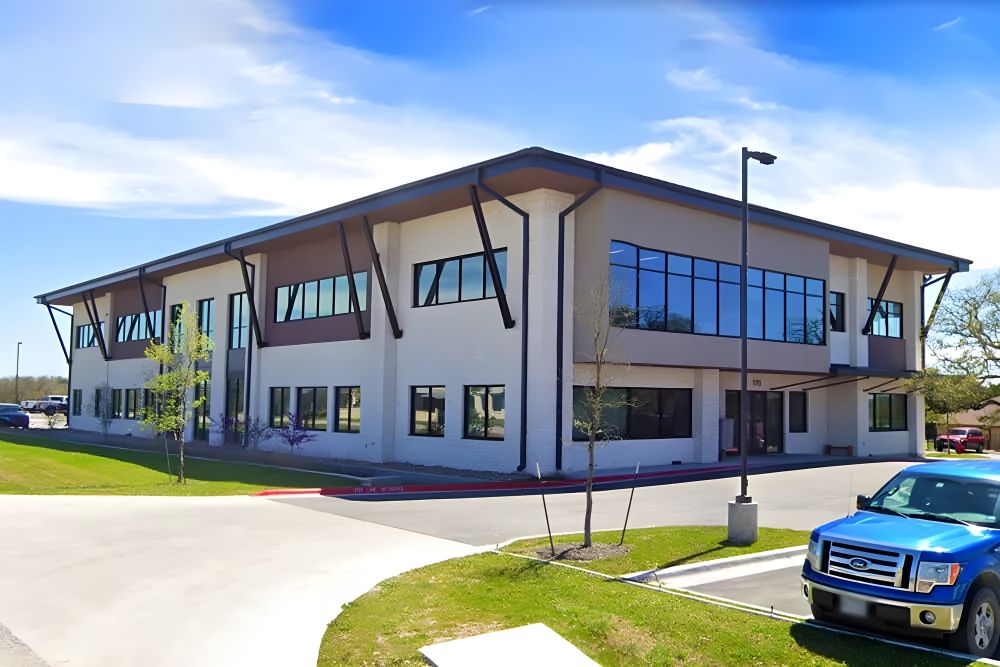Are Advanced Pain Procedures Safe? What Patients Should Know
October 17, 2025
.png)
Living with chronic pain can take a serious toll on your life, from your ability to work or enjoy activities to your overall emotional health. For many patients, the idea of finally finding relief through injections, nerve treatments, or implantable devices can be exciting, but also intimidating. It’s natural to have concerns about pain management safety and what these procedures actually involve.
At Greater Austin Pain Center, our goal is to take the uncertainty out of the process. We specialize in minimally invasive pain procedures designed to treat the source of your pain while prioritizing your safety and comfort. Below, we’ll walk through what makes these treatments safe, common concerns patients have, and why choosing an experienced outpatient pain clinic can make all the difference.
What Are Advanced Pain Procedures?
Advanced pain procedures are minimally invasive treatments that target specific nerves, joints, or tissues responsible for chronic pain. Unlike surgery, these procedures are performed through small injections or tiny incisions, often using real-time imaging for precision. They typically take less than an hour, and most patients go home the same day.
Some of the most common advanced procedures include:
- Epidural Steroid Injections: Reduce inflammation and relieve nerve pain in the neck, back, or legs.
- Facet Joint Injections & Medial Branch Blocks: Target arthritic joints in the spine to relieve pain and improve mobility.
- Radiofrequency Ablation (RFA): Uses heat to disrupt pain signals from overactive nerves.
- Spinal Cord Stimulation (SCS): A small implant that helps manage nerve pain by sending mild electrical pulses to the spinal cord.
- Regenerative Medicine Treatments: Options like PRP (platelet-rich plasma) or ViaDisc® to help restore damaged tissues naturally.
These advanced therapies are often recommended when traditional treatments like oral medication, physical therapy, or rest haven’t provided enough relief.
Pain Management Safety: How Safe Are These Procedures?
Safety is always the top concern for both patients and physicians. The good news is that advanced pain procedures are considered extremely safe when performed by trained, board-certified specialists in a clinical setting. Here’s why.
1. Minimally Invasive Techniques
Because these treatments are performed through a small needle or minor incision, the risk of infection, bleeding, or tissue damage is very low. Imaging tools such as fluoroscopy (live X-ray) or ultrasound guidance ensure the physician can target the exact area needing treatment with high precision.
2. Outpatient Setting
All procedures at Greater Austin Pain Center are performed in our outpatient pain clinic, not in a hospital. This controlled, sterile environment allows for shorter appointments, faster recovery times, and a more relaxed experience for patients—all without sacrificing safety.
3. Board-Certified Specialists
Our physicians are fellowship-trained and board-certified in pain management. This means they have specialized training in advanced procedures and perform them regularly. Their experience helps ensure treatments are performed safely and effectively.
4. Comprehensive Pre-Procedure Evaluation
Before any procedure, patients undergo a thorough medical review and diagnostic assessment. This ensures we understand the root cause of your pain and that you’re a good candidate for the treatment. We also review your medications, medical history, and any risk factors to tailor the plan to your individual needs.
5. Post-Procedure Care and Monitoring
After your procedure, our team provides detailed aftercare instructions and follow-up support. You’ll know what to expect, how to care for the treatment site, and when to reach out if you have questions. Most patients are back to normal activities within a day or two.
Common Concerns About Pain Procedures
Even with all the safety measures in place, it’s normal to feel nervous before a medical procedure. Here are some of the most common fears patients share—and the facts that can help ease them:
“Will the injection hurt?”
Most injections are well-tolerated. Before the procedure, a local anesthetic is used to numb the skin, and patients typically feel only mild pressure or a brief pinch. The discomfort is usually minimal and short-lived.
“What are the risks?”
All medical procedures carry some degree of risk, but serious complications are rare. Infections, bleeding, or allergic reactions are extremely uncommon, especially when the procedure is performed in a sterile, image-guided environment by an experienced provider.
“What if it doesn’t work?”
The goal of every advanced pain procedure is to identify and treat the source of your pain. Some treatments, like diagnostic nerve blocks, are designed to determine if a specific nerve is the problem before moving on to longer-lasting solutions like radiofrequency ablation. Your provider will walk you through expected outcomes and next steps if additional treatment is needed.
“Are implants like spinal cord stimulators safe?”
Yes. Spinal cord stimulators and similar devices are FDA-approved and thoroughly tested for safety. What’s more, patients undergo a trial period before permanent implantation to make sure the therapy is effective and comfortable.
Why Minimally Invasive Procedures Are a Smart Choice
For many people, minimally invasive pain procedures offer an ideal balance between effectiveness and safety. These treatments provide meaningful, lasting relief without the downtime, scarring, or risks associated with major surgery.
Some of the key benefits include:
- Fast recovery times. Most patients resume daily activities within 24–48 hours.
- Reduced reliance on medication, especially opioids.
- Improved mobility and function, helping you return to work, exercise, or hobbies.
- Targeted results. Treating the source of the pain rather than just masking symptoms.
And because these procedures are done in an outpatient pain clinic, they’re typically more affordable than surgical alternatives.
Why Choosing the Right Clinic Matters
When it comes to your safety, where and by whom your procedure is performed is just as important as the procedure itself.
At Greater Austin Pain Center, our entire care model is built around patient safety, comfort, and results. We follow strict infection control protocols, use state-of-the-art imaging technology, and customize each treatment plan to your specific condition.
Our four convenient locations in Austin, Kyle, San Marcos, and Dripping Springs make it easy to access expert care close to home. Whether you’re considering your first injection or exploring advanced implant options, you can trust that you’re in experienced hands.
The Bottom Line: Advanced Pain Procedures Are Safe and Effective
It’s completely natural to have questions or hesitations about injections or implantable devices. But today’s advanced pain procedures are backed by years of research, FDA approval, and the experience of pain management specialists who perform them every day.
When done in the right setting, these treatments are safe, precise, and highly effective, helping countless patients regain control of their lives and find relief from chronic pain.
At Greater Austin Pain Center, our mission is simple: to help you live with less pain and more confidence. If you’ve been putting off treatment because of fear or uncertainty, we’re here to guide you through every step with compassion and expertise.
Schedule a Consultation
Ready to take the next step toward lasting pain relief? Contact us today. Our experienced team at Greater Austin Pain Center is here to help you find the safest, most effective treatment for your needs. During your consultation, we’ll review your medical history, discuss your symptoms, and create a personalized plan focused on restoring your comfort and quality of life.
Schedule your consultation today at one of our convenient locations in Austin, Kyle, San Marcos, or Dripping Springs. Together, we can find safer, more effective solutions for lasting pain relief.

















